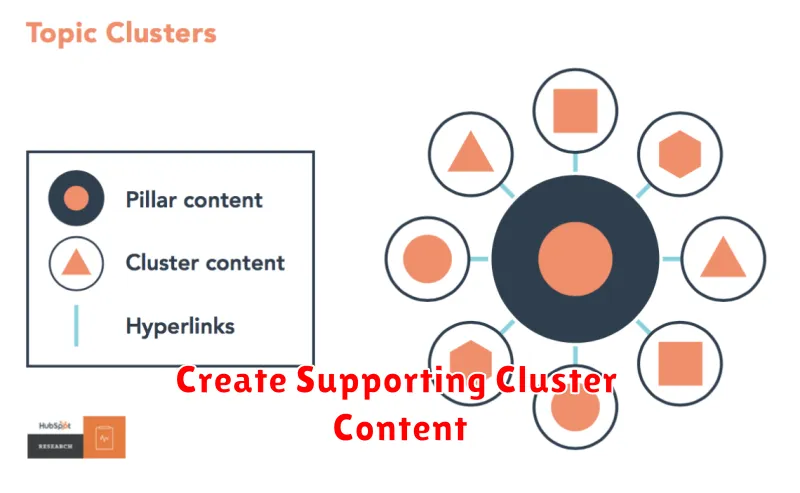In today’s competitive digital landscape, a robust SEO strategy is crucial for online visibility. Content pillars offer a powerful framework for organizing and optimizing your content, allowing you to establish topical authority and attract a larger audience. By strategically structuring your content around core topics, or pillars, you can effectively target relevant keywords and improve your search engine rankings. This comprehensive guide will delve into the mechanics of utilizing content pillars to boost your SEO, providing actionable steps to create a content strategy that drives organic traffic and strengthens your online presence. Understanding how to effectively utilize content pillars is a key element of successful SEO and can significantly impact your website’s performance.
This article will explore the benefits of using content pillars for SEO, demonstrating how they can enhance your website’s authority and drive targeted traffic. We will cover the process of identifying core topics, creating supporting cluster content, and implementing a structured linking strategy to maximize your SEO efforts. By learning how to leverage the power of content pillars, you can transform your website into a valuable resource for your target audience while simultaneously boosting your search engine visibility and achieving higher rankings. Discover the strategic advantages of using content pillars to establish yourself as a thought leader in your industry and achieve sustainable SEO growth.
What Are Content Pillars?
Content pillars are a strategic approach to content creation. They involve creating a comprehensive and in-depth piece of content, referred to as the pillar content, on a core topic relevant to your business.
Think of the pillar as the foundation. This foundational content piece broadly covers all aspects of the topic. It typically takes the form of a long-form guide, ebook, or even a long-form blog post and serves as the central hub of information.
Supporting this pillar are cluster content pieces. These are shorter, more focused pieces of content that delve into specific subtopics related to the pillar. Each cluster content piece supports and links back to the main pillar, creating a robust and interconnected web of information.
Choose a Broad Topic
The first step in developing a content pillar strategy is selecting a broad topic relevant to your business and target audience. This topic should be something you can extensively cover through various content formats, forming the foundation of your pillar.
Consider your area of expertise. What subjects do you know inside and out? What questions do your customers frequently ask? Choosing a topic you’re passionate about and knowledgeable in will make content creation easier and more effective.
For example, if you run a bakery, potential broad topics could include “Baking with Yeast,” “Cake Decorating Techniques,” or “Healthy Baking Alternatives.” These topics are broad enough to encompass numerous subtopics and content pieces.
Keyword research is essential at this stage. Identify keywords related to your chosen topic with high search volume and relevance. These keywords will guide your content creation and help your pillar rank well in search engine results.
Create Supporting Cluster Content

After establishing your pillar content, the next crucial step is to create supporting cluster content. These are shorter, more focused pieces that delve into specific aspects of your pillar topic. Think of them as spokes radiating out from the central hub of your pillar.
Each piece of cluster content should target a specific keyword related to your pillar topic. This keyword-focused approach helps search engines understand the relationship between your content and improves your chances of ranking for relevant searches.
Examples of Cluster Content Formats:
- Blog Posts
- Infographics
- Videos
- Case Studies
- FAQs
By creating a network of interconnected content, you establish your authority on the pillar topic and provide comprehensive value to your audience. This, in turn, boosts your SEO performance by attracting more organic traffic and improving your website’s overall visibility.
Link Internally Between Posts
Internal linking is a critical component of a successful content pillar strategy. It helps establish a hierarchy of information, guiding both search engines and users through your content. By linking from pillar pages to supporting cluster content, you demonstrate the relationship between these pieces and solidify the pillar page’s authority on the core topic.
Reciprocally, link from cluster content back to the pillar page. This reinforces the pillar’s topical relevance and makes it easier for users to return to the central hub of information. Think of internal links as creating a web of knowledge around your core topic.
Effective internal linking improves website navigation and user experience. It keeps visitors engaged by offering relevant further reading, reducing bounce rates, and increasing time spent on your site. These factors all contribute positively to SEO.
Consider using descriptive anchor text when linking internally. Instead of generic phrases like “click here,” use keywords related to the target page. This provides valuable context for both users and search engines, further strengthening the topical connections between your content.
Keep Pages Updated
Content pillars, by nature, require ongoing maintenance. Search engines favor fresh, relevant content. Therefore, regularly updating your pillar pages and related cluster content is essential for maintaining high search rankings and driving continuous traffic to your website.
Consider establishing an update schedule. This might involve reviewing and refreshing your pillar pages quarterly, bi-annually, or even monthly, depending on the dynamism of your industry. Regular updates signal to search engines that your content remains current and valuable to users.
Updates don’t necessarily mean complete overhauls. Sometimes, small changes are sufficient. This could involve adding new statistics, incorporating recent industry developments, or simply revising existing text for clarity and conciseness. Focus on providing value with each update, ensuring your content remains the most comprehensive and authoritative resource on the topic.
Use Keyword Variants in Subtopics
After establishing your core keyword for the pillar page, expand your content’s reach and relevance by incorporating keyword variants within subtopics. This helps search engines understand the depth and breadth of your content, connecting you with a wider audience.
Keyword variants are related terms and phrases that share the same semantic meaning as your primary keyword. For instance, if your pillar content focuses on “content marketing,” variants might include “content strategy,” “content creation,” or “content distribution.”
Strategically using these variations in your
Subheadings
,
paragraph text
, and even
list items
helps strengthen the overall topical authority of your pillar page. This signals to search engines that your content comprehensively covers all aspects of the main topic.
Consider using tools like keyword research platforms to identify relevant variants and long-tail keywords. This data-driven approach ensures your content aligns with actual search queries, maximizing your visibility and organic traffic potential.
Analyze Performance of the Pillar Page
Analyzing the performance of your pillar page is crucial for ongoing optimization and ensuring it continues to attract and engage your target audience. Regular monitoring provides insights into what’s working, what’s not, and how to improve your content strategy.
Key metrics to track include organic traffic, keyword rankings, time on page, and backlinks. Analyzing these metrics can reveal which keywords are driving traffic, whether users are finding the content valuable, and how well the page is performing in search engine results pages (SERPs).
Conversion rates are also essential to analyze. Track how many users are completing desired actions, such as downloading resources, signing up for newsletters, or making purchases. This helps determine the effectiveness of your pillar page in achieving your business goals.
Use analytics tools like Google Analytics and Google Search Console to gather and analyze this data. Regularly reviewing these metrics and making adjustments based on the findings will help ensure your pillar page remains a valuable asset for your SEO strategy.

